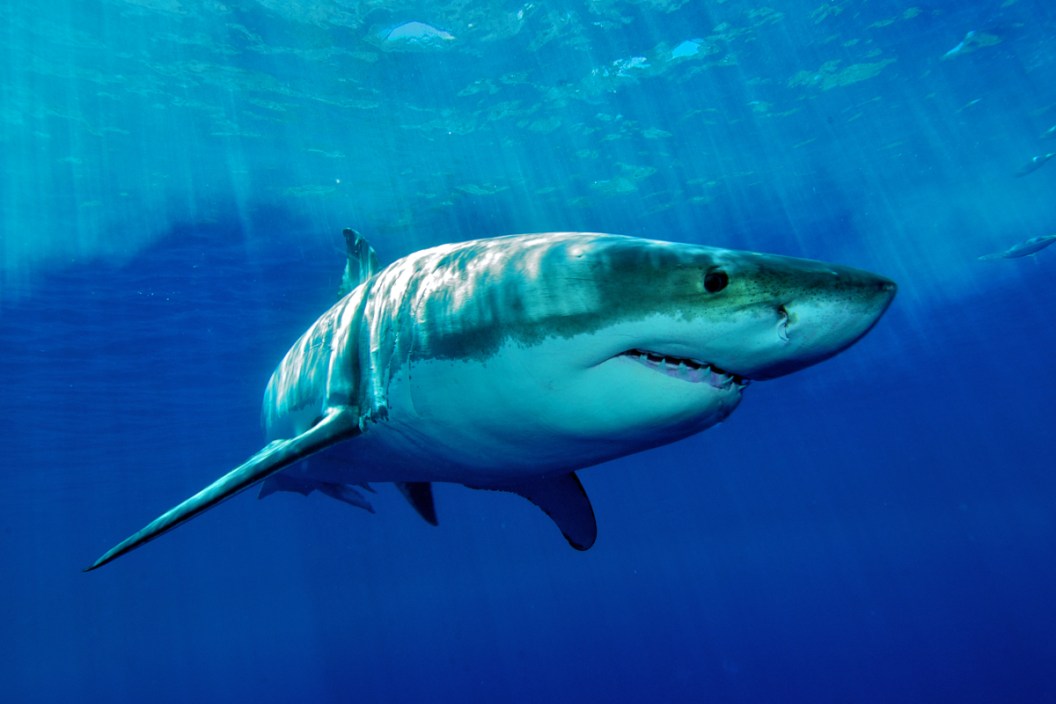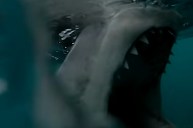Interesting facts about great white sharks you need to know.
Perhaps no animal on earth is more misunderstood than Carcharodon Carcharias, aka: the great white shark. The big fish has something of a bad reputation for shark attacks after the success of the "Jaws" franchise of movies. Probably no other shark species is more feared by people. Just the sight of that iconic dorsal fin cutting through the waves is enough to strike fear in people all over the world.
Today we're going to attempt to answer some of the most-asked questions on the Internet about these beasts of the ocean ecosystem, from how large they get, to how long they live.
At the end of the day you'll be able to impress your friends with your knowledge about the largest predatory fish currently swimming the world's oceans.
How big does a great white shark get?
If you were to look only at the International Game Fish Association's record book, you'd see the largest great white shark in the record book is 2,664 pounds. The 16-footer was caught off South Australia back in 1959 by Alfred Dean. However, this fish is nowhere near the biggest ever observed. Because of overfishing, great white shark populations are protected in the United States and all over the world. The only way to weigh a great white is to kill it, and without being able to do that legally, Dean's record is basically unbreakable. Make no mistake, Dean's catch is a massive fish, but more than one larger shark swims the world's oceans.
So, how big do great white sharks get? Well, one famous animal, a female shark known as "Deep Blue" has been followed closely by researchers the last few years. In January of 2019, she was spotted by divers near Oahu, Hawaii as she fed on a sperm whale carcass. The amazing photos of this massive shark went instantly viral on the Internet. Deep Blue is believed to be one of the biggest great white sharks ever recorded, measuring nearly 20 feet long and weighing an estimated 5,000 pounds! Her massive girth dwarfed the divers who were swimming with her.
There are a few reports of whites growing larger than that, but the details are hazy at best. There are rumors of several sharks reaching 21-23 feet from snout to tail and weighing upwards of 5,500 pounds being sighted or caught by fishermen in multiple locations like Thailand and South Africa. In some instances, later research has revealed fishermen doing what they do best, stretching the truth.
In general, researchers agree most great whites, assuming they live to full adulthood, will top out anywhere from 11 feet for males and 16 feet for females. That's still a sizeable fish! No wonder these animals have an undeserved reputation as man-eaters. Anyone would be frightened being in the water with animal of that size.
Still, the great white is not nearly the largest shark in natural history. The now-extinct megalodon (Otodus megalodon) died out sometime after the dinosaurs, but put today's predatory sharks to shame in terms of size. This fish grew to lengths approaching 50 feet and probably weighed around 60 short tons. There are stunning similarities between it and the great white. These apex predators eventually died off from the world's fisheries, largely due to climate change. Today, about the only evidence we have of their existence are massive hand-sized teeth that were shed and fossilized after falling to the sea floor millions of years ago.
How long do great white sharks live?
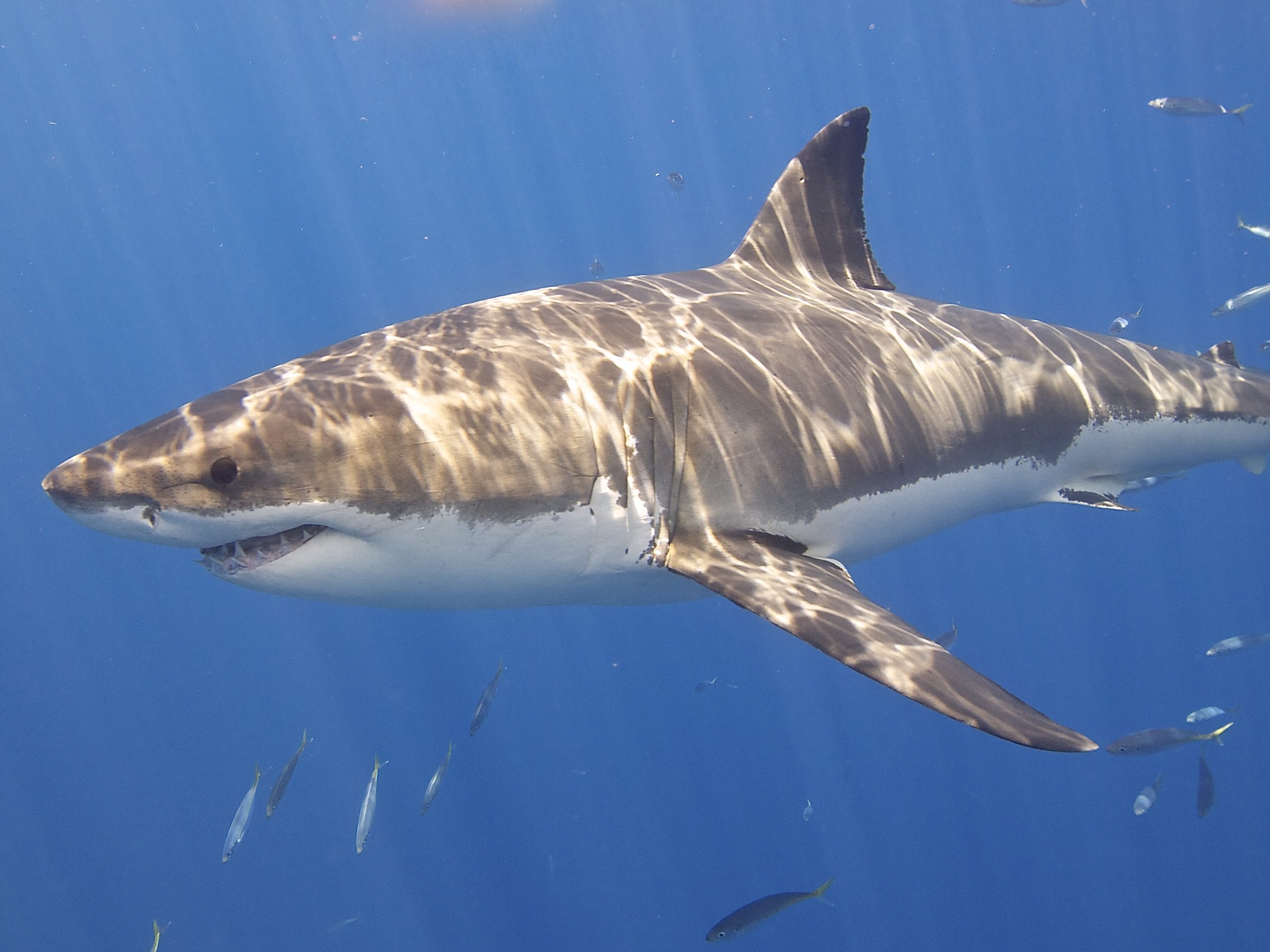
Wikimedia Commons: Elias Levy
As one of the ocean's most elusive predators, great whites have proven difficult for scientists to research just because of the vast distances these animals cover. Remember how we said Deep Blue was sighted off Hawaii? Over the years she has also been spotted off the coast of Mexico near Guadalupe Island and the Baja Peninsula. Other great whites have been recorded travelling from Australia to Africa and back again.
Because they're so hard to track, it's difficult to research and put a number on just how long they live. Most scientists believe Deep Blue to be at least 50 years old. Amazingly, it is now believed that these sharks take decades to reach breeding age. Some scientists now believe it make take more than 30 years for female great whites to reach sexual maturity.
Deep Blue was believed to be pregnant at the time she was filmed in Hawaii. Considering the gestation period for this shark, which gives birth to live young, is 11 months, it makes sense this is a long-lived species. Great whites are now believed to be capable of reaching a 70 year-old life span.
Where do great white sharks live?
One of the reasons this fish is such a successful predator is because of how hardy they are. As we've already mentioned, great whites are being seen more often in places no one thought they could live. Hawaii is just one example of this.
Great whites are common along almost all of America's coastlines, most notably along southern California and New England, where "Jaws" was famously set. Other hot spots for these big fish include Australia, New Zealand and South Africa. They are also common along the west coast of South America, through much of East Asia, especially Japan.
Although they are often thought of as an open ocean predator, they are sometimes found in inland seas like the Mediterranean and the Sea of Marmara too. For the most part however, you can find great whites almost anywhere there are ample food sources. Places that hold higher concentrations of marine mammals like seals, sea lions and dolphins will likely hold more sharks simply because these are the one of the biggest parts of their diet.
Not coincidentally, those areas are where the sharks most often have unwanted encounters with human swimmers. Most scientists believe white shark attacks are cases of mistaken identity with seals that are similar in size and shape when viewed from underwater by the shark.
How many teeth do great white sharks have?
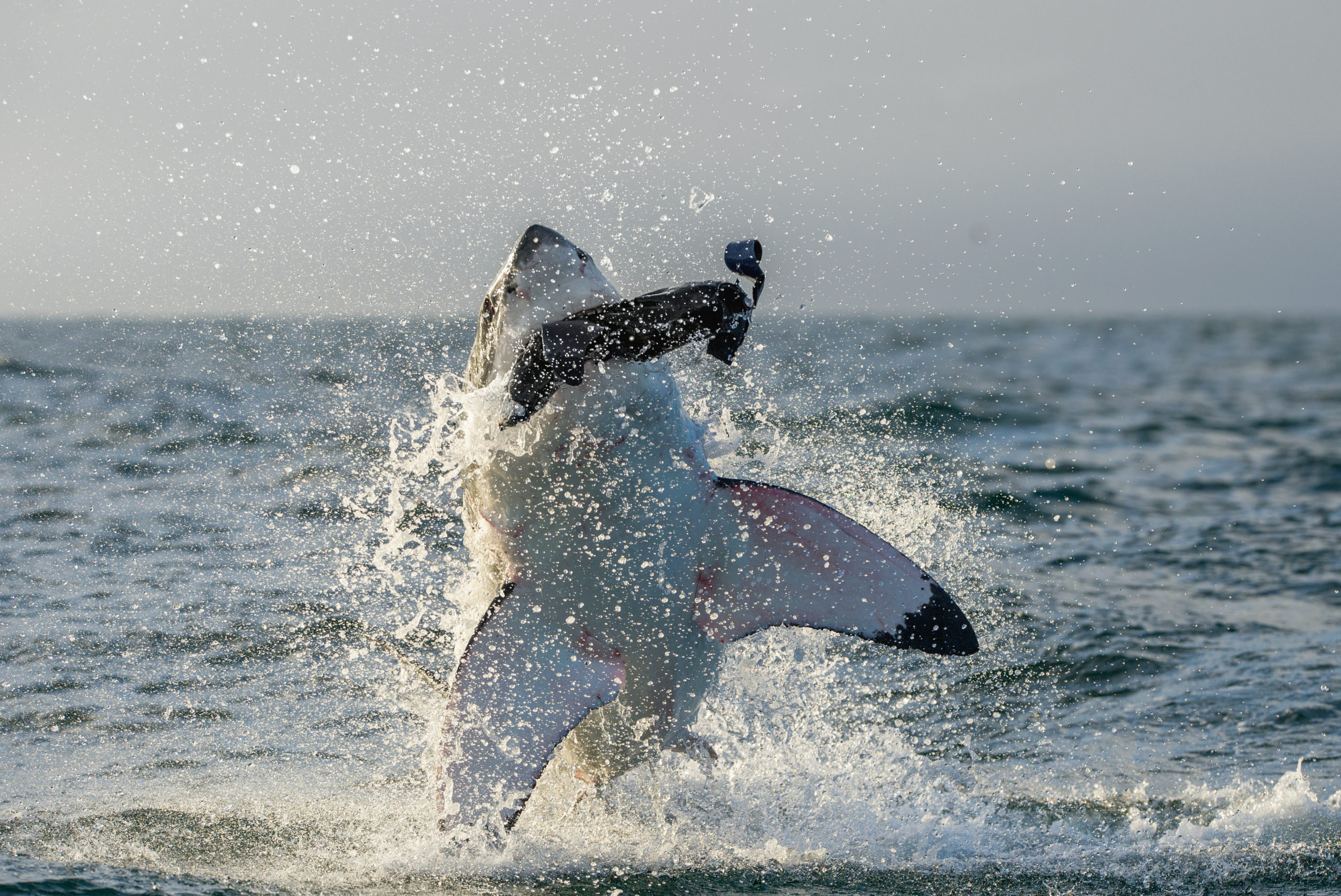
Great White Shark (Carcharodon carcharias) breaching in an attack. Hunting of a Great White Shark (Carcharodon carcharias). South Africa
Remember that awesome scene in Jaws where Richard Dreyfuss dives beneath that boat and pulls a giant tooth out of the hull? That part of the movie is surprisingly, not far-fetched at all. All sharks have teeth that are situated in their jaws in rows. Unlike humans, sharks are constantly losing and re-growing teeth as the old ones are broken and shed out.
Great whites have anywhere from four to five rows of teeth at any one time. As other teeth are shed, new ones move up to take their place. Great whites have anywhere from four to five rows of teeth at any one time. As other teeth are shed, new ones move up to take their place. New teeth are constantly needed due to the fish's diet. They eat other fish, but also seabirds, sea turtles, seals, whales, dolphins, sea lions, and other sharks. They aren't picky eaters, but all that meat takes a toll on their teeth.
For the most part, great whites average about 300 teeth in their mouth at any given moment. That's just a fraction of what they will produce in a lifetime. A long-lived great white may produce and shed anywhere from 35,000 to 50,000 teeth over their lifetime. That's one of the reasons why fossil shark teeth are so common, these eating machines are constantly replacing them!
Are great white sharks endangered?
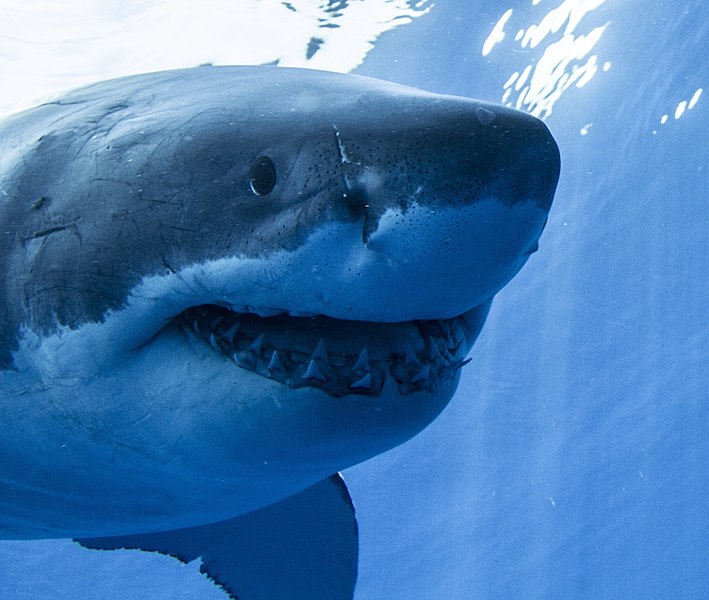
Wikimedia Commons: Shark crew
Technically, the conservation status of great white sharks is listed as "vulnerable" by the International Union for Conservation of Nature. That just means there is a good chance of them becoming endangered. As we've already mentioned, movies like Jaws and other misinformation about sharks have led to them being caught and killed in great numbers over the years.
It doesn't help the sharks any that it takes so long for them to reach maturity and that their birth rates are relatively low. In recent years, scientists have also found evidence that the great white isn't the most fearsome predator in the ocean either. Evidence has started to show up that orca whales sometimes kill white sharks. It seems to happen in places where both species are competing for seals.
As science has lifted the curtain on the mysteries of these giants of the deep, conservation efforts have ramped up for the animals. They are now heavily protected just about everywhere. You're not even allowed to target them for catch-and-release fishing in most instances.
Some areas of the globe are taking even more extreme steps to ban popular tourist attractions like cage diving to decrease the number of encounters with humans even more. It seems that most people now at least understand the importance of these predators in the ocean's food chain. It may take some time for the numbers to rebound, but we're hopeful these fish can make a comeback.
Are there any great white sharks in captivity?
With this fish being so misunderstood, it raises an interesting question. Why not put some in aquariums for the public to see and learn about in person? It would be a much better way of learning than "Shark Week" right? Well, it's been tried. Many times. Sadly, the most accurate scene in "Jaws 3" is when the juvenile great white goes belly-up in the exhibition tank.
So, why don't they take to captivity? Well, there's many factors in play here. Most notably, these animals are huge, and they require a very big tank. That's something most aquariums simply are not equipped for. Secondly, it's harder to recreate the water conditions most whites live in. The video above does a good job of explaining this in more detail. Simply put, most white sharks end up in an unnatural environment where they won't feed at all in a captive setting.
The third reason is because it's difficult to keep the animal alive while transporting it to its new home. The only place that had success in doing this is California's Monterey Bay Aquarium. They kept one for nearly 200 days in 2004. However, the animal became aggressive and started killing other marine life in the tank, prompting the keepers to release it back into the wild.
Simply put, this is not a species that was ever meant to be caged!
For more outdoor content from Travis Smola, be sure to follow him on Twitter and check out his YouTube channel.
NEXT: MAN STRUCK BY LIGHTNING, BITTEN BY ALLIGATOR, RATTLESNAKE, BROWN RECLUSE
WATCH
https://rumble.com/embed/u7gve.v3to2n/
